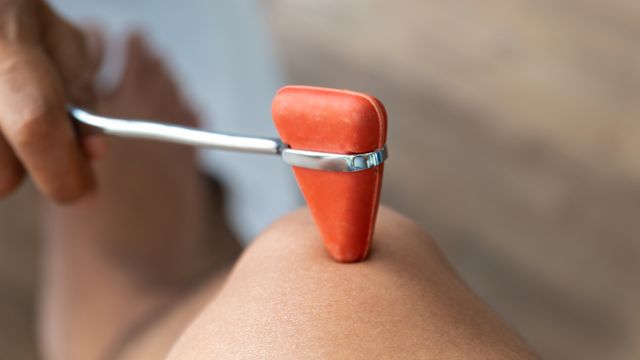Keeping your cholesterol at healthy levels is a major focus of type 2 diabetes management. High cholesterol levels are a contributing factor to cardiovascular disease, including peripheral artery disease (PAD), a narrowing of the arteries in the legs. High cholesterol levels are also a predictor and contributing factor to another serious complication of diabetes—diabetic neuropathy. Diabetic neuropathy is nerve damage that occurs as a result of having diabetes. Diabetic neuropathy and PAD can cause a range of issues, and in severe cases can lead to amputation of an affected limb.
Cholesterol
When talking about the cardiovascular system, cholesterol refers to fats or lipids that circulate in the blood. There are three main types of fats in the blood that healthcare providers look for when you have blood work:
- LDL, or low-density lipoprotein. This is called the “bad cholesterol.” Too much of this circulating in the blood contributes to the buildup of arterial plaque that narrows the arteries.
- HDL, or high-density lipoprotein. This is called the “good cholesterol.” Higher amounts of this are correlated with a lower risk of heart disease.
- Triglycerides. These are another form of blood fat, and excess amounts help contribute to the buildup of arterial plaque.
Your healthcare provider will also look at total cholesterol, which is the combined number of LDL and HDL. People with type 2 diabetes tend to have higher levels of the bad cholesterol and lower levels of the good cholesterol.
Diabetic neuropathy
As touched upon above, diabetic neuropathy is nerve damage that is caused by having diabetes. How does this nerve damage occur? It’s complicated, and involves a lot of different elements of the metabolic process. A short, simplified explanation is that elevated blood sugar levels alter the way the body behaves at a cellular level. Elevated or abnormal levels of blood glucose, LDL (and low levels of HDL), triglycerides, free fatty acids and inflammatory proteins tend to occur in tandem when a person has diabetes. In addition to contributing to arterial plaque, these factors damage cells, and impeded cells’ ability to repair damage and reproduce. Over time, tissues and organs in the body stop functioning normally. This manifests as a number of complications, such as cardiovascular disease, kidney disease, eye problems and diabetic neuropathy.
The most common form of diabetic neuropathy is peripheral diabetic neuropathy, which affects the nerves of the limbs. The feet and legs are the most common parts of the body affected. Symptoms include burning, pain, tingling, problems with balance and sensory problems. People with peripheral diabetic neuropathy are also at risk for foot problems like sores and ulcers. Having peripheral artery disease also contributes to this, because it slows blood flow to the lower limbs and extremities. Because diabetes and PAD make it difficult for wounds to heal, sores and ulcers are prone to infection. Each year, tens of thousands of diabetic patients undergo surgery to amputate a limb that has an infected wound, most often the feet or lower legs.
Autonomic neuropathy is another form of diabetic neuropathy that affects internal organs, such as the bladder, sex organs, heart and eyes. It can cause irregular heartbeats, urinary incontinence and sexual dysfunction, among other issues. Less common are focal neuropathy, which affects a single nerve (carpal tunnel syndrome is one example), and proximal neuropathy, which affects nerves in the hips, buttocks or thighs and typically occurs on one side of the body.
Protecting yourself
The best way to protect yourself from diabetic neuropathy, as well as other diabetes complications, is to keep your diabetes under control. This means keeping your blood glucose at goal. It also means keeping your cholesterol and triglycerides at healthy levels. If you are taking any medications for diabetes, take them exactly as prescribed by your healthcare provider. While there are numerous different options for treating diabetes, every diabetes treatment plan should focus on regular exercise and healthy eating. If your numbers are not at goal, work with your healthcare provider to find ways to improve your treatment plan.



